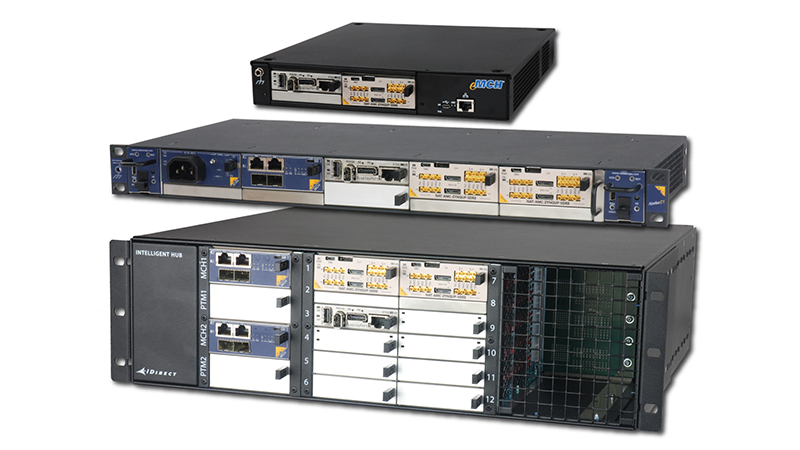N.A.T. Announces Comprehensive New Software Defined Radio (SDR) Product Line for Wireless Network Deployment, Testing, and Phased Arrays
Ranging from building block components to complete application-ready systems including application software, N.A.T. overcomes the limitations of DSPs to target next-generation networks
N.A.T. announced a new range of software-defined radio (SDR) products that enable wireless network developers to speed and simplify their application development and deployment.
The new N.A.T product portfolio ranges from an individual radio frequency (RF) card in the FMC form factor (NAT-FMC-SDR4) to turnkey, field-deployable 19-inch rack-mounted systems (NAT-SDR-FLEX) with application software and sample projects. These SDR solutions can streamline the development and deployment of applications, improving time-to-market while retaining flexibility. Applications include:
- Wideband receivers for scanning and direction-finding
- Wideband transmitters, used for jamming
- 4G and 5G network test equipment
- Proof-of-concept setups including custom waveforms and beamforming,
- Sensing techniques for cognitive radio
- Remote radio heads (RRH) for phased antenna arrays
NAT-SDR-FLEX-collage.jpgThe optional 5G (3GPP rel.15) package enables private wireless network applications such as wideband LTE/5G base station and radio units as well as narrowband cellular IoT (cIoT). The N.A.T. turnkey systems available off-the-shelf, named NAT-SDR-FLEX, include all the hardware and software needed to build these applications with scalability from eight to 72 channels, or more using multiple systems.
Software-defined radios (SDRs) have historically been created with digital signal processors (DSPs) providing the core processing power. Increasing performance demands and the rapidly evolving market limits DSP-based SDRs, which N.A.T. has overcome by using flexible, programmable FPGAs. To simplify and accelerate the development of FPGA-based SDRs, N.A.T. has invested significant resources in creating comprehensive software support packages and documentation. This offering goes beyond the basic board support packages, drivers, and operating systems to include libraries, sample projects, sample application software, and application notes to support developers more than ever before.
The heart of the N.A.T. SDR portfolio is a modular AMC board, the NAT-AMC-ZYNQUP-SDR, that combNAT-AMC-ZYNQUP-Carrier-w-SDR-Frontplate.jpgines the latest Analog Devices large bandwidth RF-transceivers (ADVR 9009) and a powerful Xilinx® Zynq® UltraScale+™ FPGA with integrated quad-core ARM® processor. This board can be configured with different RF front end and front panel I/O simply by choosing N.A.T.’s FMC-boards with the required functions. SDR properties, such as the number of RF channels, filtering and control IO for external RF, can be integrated into the platform by selecting from a wide range of FMC building blocks. N.A.T. can also collaborate with customers to develop custom mezzanine cards with special functions.
The NAT-AMC-ZYNQUP-SDR can be easily integrated into any system hosting AMCs, which are open standards-based modules, allowing a flexible and application-specific scaling of the number of RF interfaces. In addition to further SDR units, other AMCs such as processing units can be selected from the market and easily added thanks to a standardized plug-and-play architecture.

